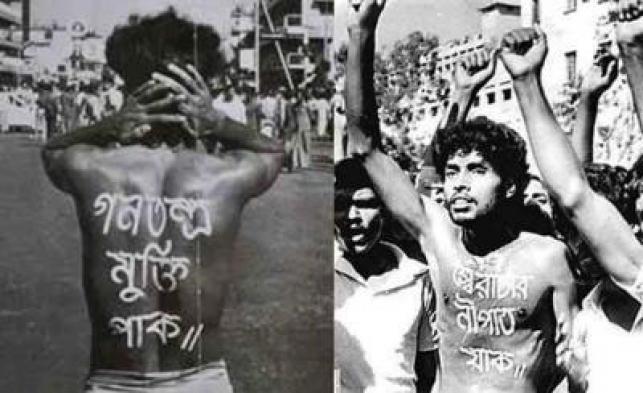Forty-one years ago, the misty winter morning of December 16, 1971, the day the nation celebrates as Victory Day, brought the glorious independence of Bangladesh. It was the day the whole nation had waited to see during nine months of genocide that the savage Pakistani occupation army launched to eliminate the ethnic Bengali nation. The massacre, taking a toll of 3 million lives, was unprecedented in the history of the world.
Indian Army chief General Manekshaw’s stern warning to the occupation forces was being beamed around the country since early morning of December 15, alerting the occupation forces to surrender or face the consequences. The morale of the Pakistan army was completely broken. East Pakistan (now Bangladesh) had already fallen to the Muktibahini-Indian army joint forces. The people were euphoric in spite of some uneasiness in the air.
The surrender took place at the then Race Course (now Suhrawardy Uddyan). Jagjit Singh Aurora, C in C of Eastern Command, India, accepted the surrender of Lt. Gen A.K. Niazi, his batch mate in the army before partition, now G.O.C of Eastern Command of the Pakistan army. Bangladesh side was represented by the then Air Force chief of Bangladesh A.K. Khondakar.
Enthusiastic citizens from all over the city gathered at the venue to witness this auspicious and long awaited moment of victory through the surrender of the barbaric Pakistan army. Tears welled up in many eyes while reflecting on the fierce struggle, sufferings, atrocities and deaths they had to encounter to win this freedom.
With the rejoicing going all around situation dampened the gala mood of the people. Possibly with orders from the occupation forces army command, Pakistani troops were marching towards the cantonment. Because of the brutalities they unleashed for nine months on innocent people, the crowd jeered them. The soldiers suddenly started firing after taking positions inside the Sakura restaurant and the alleyways beside the restaurant. We were at our wit’s end at this sudden ominous development. By the grace of almighty Allah, Indian Brigadier Balabir Singh, with two convoys of troops, reached the spot. At that time a stream of bullets from some unknown direction smashed the window pane of the Brigadier’s jeep. Instructing us to go into the Inter Continental Hotel, which was then a neutral zone, the brigadier told his troops to fight back. When the firing stopped, we came out of the hotel and saw some Pakistani soldier’s bodies strewn in areas near Ramna Park and Minto road crossing.
While the whole country and government become busy in celebrating the memorable occasion year after year, our thoughts go back to those days of atrocities and genocide carried out by the occupation forces.
Throughout the nine months, the ruthless occupation forces were extracting a terrible vengeance. True, at this dawn of freedom after 41 years, Bangladesh was still reeling because of the events of the nine months in 1971. Even today, 41 years on, the horror is still fresh in the memory of the survivors. It was simply a “kill and burn mission,” in the words of Anthony Mascarhenhas, the Sunday Times reporter who had often made secret trips to Bangladesh during this period.
After my brother’s killing in May, 1971, while I was travelling to Satkhira, I was often interrogated by the Pakistan army personnel at several points of the road journey from Jessore, I saw whole villages devastated in reprisal because the freedom fighters had either damagied a bridge or cut off a road. At many points like Navaron, Kalaroa and Jhaudanga, Pak army stopped me, suspecting that I might attempt to cross the border. But a letter issued on his official pad by the Vice Chancellor of EPUET (now BUET), Dr. M. A Naser, saved me. He had written: “Md. Asadullah Khan, Assistant Professor of Physics at EPUET is proceeding to Khulna to transact some urgent official business.” The semi-literate crack captain who took a glance at the letter did not know that at that time EPUET had no business at Khulna and moreover I was going to Satkhira and not Khulna as mentioned in the letter. They repeatedly asked me: “Who is this person who signed this note?” I told them in broken Urdu that he was the baara admi (big boss) in the office I was working. After glancing at the letter several times, they allowed me to go.
Now Bangladesh is a reality. But the country is still in a state of turmoil. The war that was won almost four decades ago had objectives that are yet to be achieved. The nation’s social ills have not been cured. Thousands of wounded and disabled war heroes lie uncared for and the families of the Shaheed war heroes, killed either inside the country or the in the war field, are yet to be rehabilitated.
The writer is a columnist of The Daily Star.
E-mail: aukhandk@gmail.com
Source: The Daily Star









